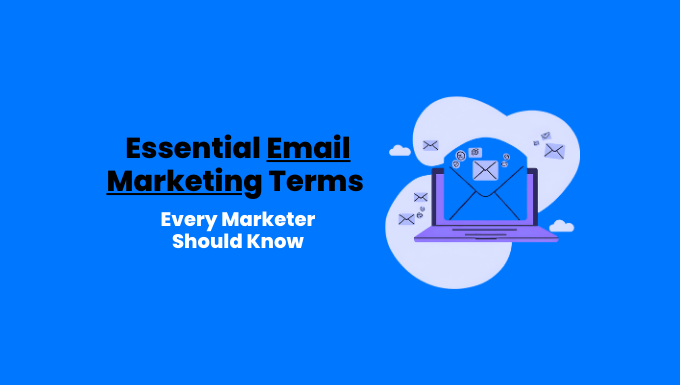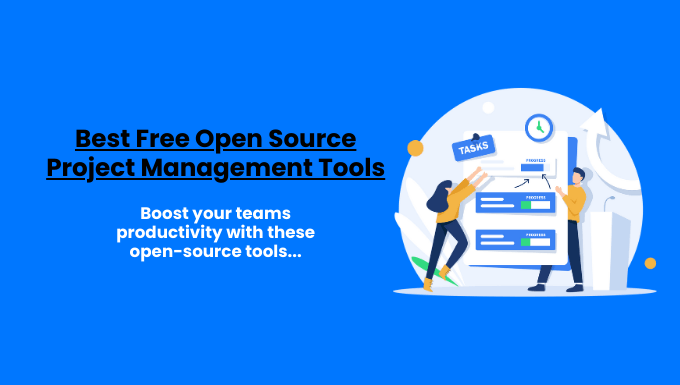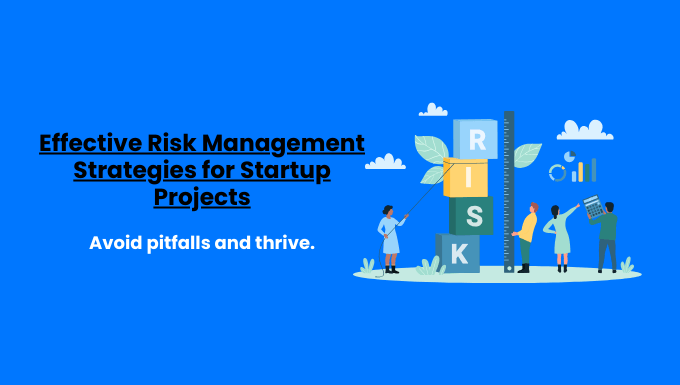Attention email marketers! Are you drowning in a sea of confusing jargon?
Interested in boosting your campaign performance?
Discover the power of mastering essential email marketing terms.
By understanding these key concepts, you’ll desire to create more effective campaigns that drive real results.
Ready to take action and elevate your email marketing game?
Key Takeaways:
- Learn 70 crucial email marketing terms to enhance your strategies.
- Understand metrics like open rates, CTR, and conversion rates.
- Discover best practices for compliance, automation, and optimization.
- Explore emerging trends like AI and hyper-personalization.
- Gain insights to improve deliverability and engagement.

Contents
ToggleWhy Email Marketing Matters
Email marketing continues to be a cornerstone of digital marketing strategies, boasting an impressive ROI and exceptional conversion rates.
Recent statistics reveal that email marketing yields an average ROI of 4200%, making it an incredibly cost-effective method to connect and engage with customers.
Moreover, 73% of millennials prefer receiving communications from businesses via email, underscoring the significance of this channel in targeting key demographics, a critical aspect of a comprehensive marketing plan.
The Impact of Email Marketing on Campaigns
Effective email marketing can profoundly influence marketing campaigns by enhancing engagement, nurturing leads, and ultimately driving sales.
For instance, personalized emails have been shown to generate six times higher transaction rates, emphasizing the potency of tailored messaging.
Additionally, welcome emails enjoy an average open rate of 82%, establishing them as a valuable point of contact for new subscribers.
Foundational Email Marketing Terms
Let’s dive into the world of email marketing and explore some key terms that every business owner and beginner entrepreneur should be familiar with.
1. Email Marketing
Email marketing is a powerful tool for businesses to connect with their audience through targeted and personalized messages, serving as a cornerstone of content marketing.
It allows for direct communication with customers, driving engagement and building brand loyalty.
Some examples of effective email marketing campaigns include:
- Welcome Emails: Introducing new subscribers to your brand.
- Promotional Emails: Offering discounts, promotions, or special offers used in email marketing.
- Drip Campaigns: Sending a series of emails over time to nurture leads.
2. Email

In email marketing, various types of emails are utilized, such as promotional emails, transactional emails, newsletters, and cold emails.
A successful case study is Amazon, which effectively uses transactional emails to provide order confirmations and shipping notifications, enhancing customer experience and satisfaction.
In the realm of marketing, emails are versatile tools used for various purposes, such as promoting a product or service effectively.
- Transactional Emails: Confirming purchases or providing order updates.
- Promotional Emails: Highlighting sales, new products, or events.
- Welcome EmailsGreeting new subscribers via email sets the tone for future communications and begins the process of building a relationship.
3. Marketer
Marketers play a crucial role in crafting and executing email campaigns. They need a combination of skills, including data analysis, copywriting, and understanding consumer behavior, to create compelling and effective email marketing strategies.
Successful marketers like Neil Patel have honed these skills to drive successful email marketing campaigns.
4. Email Marketing Statistics
Keeping abreast of key email marketing statistics is essential for marketers in 2024. These statistics provide valuable insights into consumer behavior and trends, shaping marketing strategies.
For example, the average email open rate across industries is 17.8%, underscoring the importance of crafting engaging subject lines to capture audience attention.
In 2024, some important statistics to note include:
- Average Open Rate: 18.0%
- Average Click-Through Rate: 2.6%
- Average Conversion Rate: 3.9%
5. Click-Through Rate (CTR)
The click-through rate (CTR) measures the percentage of recipients who clicked on a link in an email. Improving CTR involves optimizing email content, CTAs, and personalization.
Campaign Monitor’s high-CTR campaigns showcase the effectiveness of compelling content and engaging CTAs in driving user interaction.
To improve CTR, consider:
- Crafting compelling subject lines.
- Personalizing content based on recipient preferences to increase email marketing revenue.
- A/B testing different elements to optimize performance.
6. Open Rate
The open rate indicates the percentage of recipients who opened an email. Enhancing open rates requires attention to subject lines, sender reputation, and email timing.
Strategies like A/B testing subject lines have proven effective in boosting open rates and maximizing email engagement.
To enhance open rates, focus on:
- Writing engaging subject lines.
- Segmenting your email list for targeted messaging.
- Sending emails at optimal times for your audience can significantly impact success rates, as shown in the latest email marketing statistics.
7. Conversion Rate
Conversion rate measures the percentage of recipients who took a desired action after engaging with an email.
To increase conversion rates, marketers need to focus on clear CTAs, personalized content, and targeted segmentation, elements that are often enhanced by marketing automation software.
Brands like HubSpot have successfully optimized their email campaigns to drive higher conversion rates and ROI.
Strategies to boost conversion rates include:
- Clear and compelling call-to-action (CTA) buttons.
- Creating a sense of urgency or exclusivity in your emails.
- Providing valuable content that resonates with your audience.
8. Bounce Rate
Bounce Rate categorizes emails that were undeliverable, either as hard bounces (permanent delivery failures) or soft bounces (temporary issues).
Reducing bounce rates involves maintaining a clean email list, using double opt-ins, and monitoring email performance metrics. Implementing list hygiene best practices helps minimize bounce rates and ensures email deliverability.
To reduce bounce rates, ensure:
- Your email list is clean and regularly updated.
- You use a reputable email service provider.
- Your email content complies with anti-spam regulations.
9. Deliverability
Email deliverability refers to the ability of an email to reach recipients’ inboxes successfully. Factors like sender reputation, content quality, and engagement rates impact deliverability.
By adhering to best practices, such as avoiding spam triggers and optimizing email content, marketers can improve deliverability and enhance campaign effectiveness.
Factors that affect deliverability include:
- Sender reputation.
- Quality of email content.
- Engagement metrics like open rates and click-through rates.
10. Spam Complaints
Spam complaints occur when recipients mark emails as unsolicited or unwanted, negatively impacting the sender’s reputation and deliverability.
To minimize spam complaints, marketers should focus on permission-based marketing, relevant content, and clear opt-out options, as a part of their broader marketing plan.
By respecting subscriber preferences, brands can maintain a positive sender reputation and foster trust with their audience.
To reduce spam complaints, avoid:
- Misleading subject lines or content can negatively impact the rate for email, violating email marketing best practices.
- Sending emails too frequently.
- Purchasing email lists or sending unsolicited emails.
11. Unsubscribe Rate
Monitoring unsubscribe rates is crucial for understanding subscriber preferences and engagement levels. To reduce unsubscribe rates, marketers should provide valuable content, segment email lists effectively, and offer clear opt-out mechanisms.
By respecting subscriber choices and preferences, brands can retain loyal customers and build lasting relationships.
To lower unsubscribe rates, consider:
- Providing valuable and relevant content.
- Allowing subscribers to manage email preferences.
- Segmenting your email list based on interests and behaviors.
12. Transactional Email
Transactional emails provide essential information to customers, such as order confirmations and shipping notifications. These emails play a vital role in customer engagement and satisfaction, contributing to brand credibility and loyalty.
Companies like Uber use transactional emails effectively to enhance the user experience and drive repeat business.
13. Promotional Email
Promotional emails are designed to promote products, services, or special offers to customers and are a staple example of marketing with regard to lead nurturing strategies.
Crafting compelling promotional emails involves clear messaging, attractive visuals, and persuasive CTAs.
Brands like Sephora leverage promotional emails to showcase new products and exclusive deals, driving sales and customer engagement.
Best practices for promotional emails include:
- Creating compelling visuals and copy.
- Personalizing content based on customer preferences.
- Including clear CTAs and limited-time offers.
14. Welcome Email
Welcome emails are the first communication a subscriber receives after signing up for an email list.
These emails set the tone for future interactions and help establish a strong relationship with new subscribers.
Creating an effective welcome email involves personalization, clear branding, and valuable content to engage and retain subscribers from the outset, embodying several key marketing terms.
To create an effective welcome email, consider the power of personalization and the impact of concise, engaging content on your marketing and sales goals.
- Expressing gratitude for subscribing and setting clear expectations sales have for marketing.
- Introducing your brand and its values.
- Encouraging subscribers to take action, such as visiting your website or following you on social media.
15. Drip Campaigns
Drip campaigns are automated email sequences sent to subscribers at predetermined intervals. These campaigns nurture leads, educate customers, and drive conversions over time.
Successful drip campaigns, like those by Netflix, deliver relevant content based on user behavior and preferences, enhancing engagement and brand loyalty.
16. Newsletter
Newsletters are regular email communications that provide subscribers with updates, news, and valuable content.
Crafting engaging newsletters involves a mix of curated and original content, eye-catching visuals, and personalized recommendations.
Brands like TheSkimm deliver informative and entertaining newsletters to keep subscribers informed and engaged.
To create engaging newsletters, consider:
- Using a mix of content types, such as articles, videos, and infographics.
- Segmenting your audience for personalized content.
- Including interactive elements like polls or surveys in promotional or cold emails can elevate engagement rates.
17. Re-engagement Email
Re-engagement emails are targeted campaigns aimed at reconnecting with inactive subscribers.
These emails help rekindle interest, drive engagement, and reduce subscriber churn.
Effective re-engagement strategies, such as offering exclusive deals or personalized recommendations, can win back lapsed customers and reinvigorate email lists.
Strategies for re-engagement include:
- Offering exclusive discounts or incentives.
- Asking for feedback to understand subscriber preferences.
- Providing valuable content that reignites engagement.
Email Marketing Campaign Components
When it comes to email marketing, your email list is the foundation of your success.
Let’s dive into some key components that can help you build and maintain a strong email list for your marketing campaigns.
18. Email List
An email list is a curated collection of email addresses of individuals who have opted in to receive communications from your business.
Strategies for Building an Email List:
- Offer valuable content or incentives in exchange for email sign-ups.
- Use pop-ups, lead magnets, and social media to capture email addresses.
- Leverage partnerships and collaborations for list growth, underlining the significance of b2b marketing strategies in expanding your email sent base.
19. Segmentation
Segmentation involves dividing your email list into specific groups based on demographics, behaviors, or preferences.
Importance of Segmentation:
- Increases email relevance and engagement.
- Boosts open rates and click-through rates.
20. Opt-In
Types of Opt-In Methods:
- Single Opt-In: Subscribers sign up once to join your list.
- Double Opt-In: Subscribers confirm their email address after signing up.
Importance of Consent in email marketing for maintaining a marketing-qualified lead.
- Ensures compliance with data protection regulations.
- Builds trust with subscribers and reduces spam complaints.
21. Lead Magnet
Lead magnets are valuable incentives offered to prospects in exchange for their contact information.
Examples: E-books, webinars, templates, and free trials.
Strategies for Lead Magnets:
- Address specific pain points of your target audience.
- Promote lead magnets across multiple channels for maximum exposure.
22. List Hygiene
Importance of List Hygiene for maintaining a clean and responsive list of email subscribers.
- Ensures high deliverability and engagement rates, a vital 70 email marketing stats marketers need to know in 2024.
- Reduces the risk of spam complaints and unsubscribes.
Best Practices for deploying an effective social media marketing strategy alongside traditional email campaigns.
- Regularly clean your list by removing inactive or bounced email addresses.
- Use email verification tools to validate subscriber data.
23. Subscriber
A subscriber goes through various stages from sign-up to engagement and conversion.
Techniques to Increase and Retain Subscribers: Leveraging insights from the latest email marketing statistics can be invaluable.
- Send personalized welcome emails to new subscribers.
- Provide valuable content consistently to keep subscribers engaged.
24. Suppression Lists
A suppression list contains email addresses that should not receive marketing communications.
Purpose: Prevents sending emails to unsubscribed or inactive contacts.
Best Practices:
- Update suppression lists regularly to maintain compliance and use marketing automation platforms to streamline the process.
- Segment suppression lists based on specific criteria for targeted campaigns.
25. Data Enrichment
Data enrichment involves enhancing your email data with additional information for better targeting.
Benefits:
- Improves personalization and relevance in email campaigns.
- Enhances segmentation and targeting capabilities.
Email Marketing Content and Design Terms
In the fast-paced world of email marketing, content, and design play a pivotal role in capturing your audience’s attention and driving engagement.
Let’s dive into some key terms and strategies that can help you level up your email marketing efforts.
26. Subject Line
The subject line is your first impression of your audience, and we all know how important first impressions are!
Here’s why subject lines matter:
- Importance of Subject Lines: A whopping 47% of email recipients decide whether to open an email based on the subject line alone, highlighting the importance of crafting compelling subject lines, a critical marketing term you should know.
- Crafting Compelling Subject Lines is fundamental in cutting through the noise and reaching email users effectively. Keep it short, sweet, and intriguing to captivate your email users from the start. Personalization, urgency, and curiosity are your best friends.
- High-Performing Examples: “Exclusive Offer Inside”, “Last Chance to Save 50%”, “You’re Invited: Special Event”.
27. Email Copy
Your email copy is where you get to shine and connect with your audience.
Here’s how to make your email content stand out: by integrating personalization techniques powered by marketing software.
- Best Practices for Email Content: Keep it concise, relevant, and focused on the reader. Use clear language and a conversational tone.
- Effective Email Copy: Tell a story, address pain points, and always provide value.
28. Call to Action (CTA)
Your CTA is the guiding light that leads your audience to take the desired action.
Here’s why CTAs are crucial:
- Definition and Significance: A strong CTA prompts the reader to act, whether it’s making a purchase, signing up for a webinar, or downloading a resource.
- Strong CTA Examples: “Shop Now”, “Learn More”, and “Start Your Free Trial”.
- Enhancing CTA Effectiveness: Use action-oriented language, create a sense of urgency, and make it visually appealing.
29. Personalization
Personalization is the secret sauce that can take your email marketing to the next level.
Here’s why it matters:
- Definition and Benefits: Personalized emails deliver 6x higher transaction rates. Tailoring content to individual preferences can boost engagement and loyalty.
- Personalization Techniques: Use dynamic content, segment your audience, and address recipients by name.
- Impact of Personalization: Case studies have shown that personalized subject lines can increase open rates by 50%.
30. Dynamic Content
Dynamic content allows you to deliver tailored messages to different segments of your audience.
Here’s how it can enhance your email marketing plan:
- Definition and Use Cases: One email can exemplify numerous use cases including cold email strategies and the alignment of sales and marketing efforts. Dynamic content adapts to the recipient’s behavior, preferences, and demographics.
- Examples of Dynamic Content are product recommendations, personalized offers, and location-based content.
31. Visual Content
Visuals can make your emails more engaging and memorable.
Here’s why you should leverage visual content:
- Importance of Visuals: Emails with images receive 42% more clicks than those without. Visuals can convey complex information quickly and effectively.
- Best Practices for Visuals: Use high-quality images, optimize for mobile, and ensure visuals enhance your message.
32. Plain Text Email
While visual content is essential, plain text emails have their own charm.
Here’s when to consider using plain text emails: especially when targeting users in areas with limited internet bandwidth, as suggested by 70 email marketing stats marketers need to know in 2024.
- Definition and Usage: Plain text emails are simple, text-based messages without any formatting or images.
- Advantages and Limitations: Plain text emails feel personal and are less likely to land in the spam folder. However, they lack visual appeal and branding elements.
33. Interactive Email
Interactive emails allow recipients to engage with your content directly.
Here’s why interactive emails can take your campaigns to the next level:
- Definition and Examples: Interactive emails include elements like quizzes, surveys, sliders, and accordions.
- Benefits of Interactivity: Increase engagement, gather feedback, and provide a unique user experience.
Automation and Optimization Terms
In the fast-paced world of email marketing, automation plays a crucial role in streamlining processes, enhancing efficiency, and driving better results.
Let’s dive into some key terms related to automation and optimization that every business owner and entrepreneur should be familiar with:
34. Email Automation
Email automation refers to the use of technology to automate the process of sending targeted and personalized emails to subscribers based on specific triggers or actions.
This automation can help businesses save time, increase engagement, and drive conversions.
Benefits of Email Automation:
- Saves time and resources
- Improves customer targeting and personalization
- Increases efficiency and scalability
Popular Email Automation Tools:
35. Autoresponder
An autoresponder is a type of email automation that sends pre-written emails to subscribers at scheduled intervals or in response to specific actions.
It is commonly used for welcome emails, lead nurturing, and follow-up sequences.
Effective Autoresponder Sequences:
- Welcome series for new subscribers, a key strategy in email marketing to engage new email subscribers effectively.
- Abandoned cart recovery emails
- Educational email courses
36. Triggered Emails
Triggered emails are automated messages that are sent in response to a specific action or behavior by a subscriber.
These emails are highly targeted and timely, increasing the chances of engagement and conversion.
Examples of Triggered Emails:
- Order confirmation emails
- Birthday or anniversary emails
- Cart abandonment reminders
37. Workflow
An email workflow is a series of automated steps that guide subscribers through a specific journey or process.
It typically includes triggers, actions, and conditions to deliver the right message at the right time.
Creating an Effective Email Workflow:
- Define the goal of the workflow
- Map out the customer journey
- Test and optimize the workflow for better results
38. Scheduling
Email scheduling involves setting the date and time for sending out marketing emails to subscribers.
Timing plays a crucial role in the success of email campaigns, as it can impact open rates and engagement.
Best Practices for Email Scheduling:
- Consider the time zone of your audience
- Test different send times to find the optimal schedule
- Avoid sending emails during peak unsubscribe times
39. Lead Nurturing
Lead nurturing is the process of building relationships with potential customers at every stage of the buyer’s journey.
It involves providing valuable content, addressing customer needs, and guiding leads towards conversion.
Strategies for Lead Nurturing:
- Personalized email content
- Segmented email campaigns
- Lead scoring and tracking
40. Drip Email Campaigns
Drip email campaigns are automated series of emails that are sent out on a predefined schedule.
These campaigns are designed to deliver the right message to the right audience at the right time, nurturing leads and driving conversions.
Benefits of Drip Email Campaigns:
- Keeps leads engaged over time
- Provides relevant and timely information
- Increases conversion rates
41. Key Performance Indicators (KPIs)
Key Performance Indicators (KPIs) are metrics used to measure the effectiveness and success of email marketing campaigns.
Tracking and analyzing KPIs is crucial for marketers to understand performance in their email-sent strategies, identify areas for improvement, and make data-driven decisions.
Examples of Email Marketing KPIs:
- Open rate
- Click-through rate
- Conversion rate
- Return on Investment (ROI)
42. A/B Testing
A/B testing, also known as split testing, involves comparing two versions of an email or a landing page to determine which one performs better.
This testing method helps marketers optimize their campaigns, improve results, and enhance the overall effectiveness of their email marketing efforts.
Benefits of A/B Testing:
- Identifies the most effective elements
- Improves engagement and conversion rates
- Provides valuable insights for future campaigns, essential for refining email marketing strategies and enhancing sales and marketing efforts.
43. Multivariate Testing
Multivariate testing is a more advanced testing method that involves testing multiple variables simultaneously to determine the best combination for optimal results.
This testing approach allows marketers to test various elements and their interactions to fine-tune their campaigns.
Difference between A/B and Multivariate Testing used in email marketing:
- A/B testing compares two versions of a single variable
- Multivariate testing tests multiple variables and their combinations
44. ROI (Return on Investment)
Return on Investment (ROI) is a key metric that measures the profitability and effectiveness of an email marketing campaign.
Calculating ROI helps businesses understand the value generated from their marketing efforts, including aligning sales and marketing efforts, and make informed decisions to improve performance.
Methods to Calculate and Improve ROI:
- Track revenue generated from email campaigns
- Monitor costs associated with email marketing
- Optimize campaigns for better ROI
45. Engagement Metrics
Engagement metrics, such as clicks, opens, and conversions, are essential for evaluating the performance of email marketing campaigns.
By analyzing these metrics, marketers can gain insights into subscriber behavior, preferences, and interests, allowing them to optimize their campaigns for better results.
Techniques to Boost Engagement:
- Personalize email content
- Segment email lists for targeted campaigns to boost sales and marketing efficiency.
- Use compelling subject lines and calls to action.
Advanced Email Marketing Strategies
46. Social Media Integration
Are you harnessing the power of social media to supercharge your email marketing campaigns? By integrating your email efforts with social media strategies, you can reach a broader audience and boost engagement.
Imagine the possibilities of seamlessly connecting with your customers across multiple channels, enhancing the SLA defines the expectations marketing has for sales.
Let’s dive into the benefits of cross-channel marketing:
Benefits of Cross-Channel Marketing:
- Increased brand visibility
- Enhanced customer engagement
- Improved conversion rates through targeted email campaigns and a solid marketing plan.
47. CRM (Customer Relationship Management) Integration
Your CRM system is a goldmine of customer data waiting to be leveraged for your email marketing campaigns.
Discover how integrating CRM with your email strategy can revolutionize your approach to customer communication.
Let’s explore the role of CRM in email marketing and learn from real-world examples:
- Personalized email content
- Targeted segmentation
- Enhanced customer experience
48. API (Application Programming Interface)
APIs are the unsung heroes behind the scenes, powering seamless interactions between different software applications. Learn how APIs can elevate your email marketing game by enabling integrations with third-party tools and platforms.
Uncover the benefits of API for email marketing through practical examples:
Benefits of API for Email Marketing:
- Streamlined data synchronization
- Automated workflows
- Enhanced customization options
49. Cross-Channel Marketing
In a world where customers seamlessly switch between devices and platforms, mastering cross-channel marketing is essential for staying ahead of the curve.
Explore the definition and benefits of cross-channel marketing, along with strategies for implementing a cohesive and effective approach:
Benefits of Cross-Channel Marketing:
- Consistent brand messaging
- Improved customer engagement
- Higher ROI on marketing efforts
50. Behavioral Targeting
Tailoring your email content based on user behavior can significantly impact the success of your campaigns.
Dive into the world of behavioral targeting and discover how you can deliver hyper-personalized messages that resonate with your audience.
Let’s explore the definition of behavioral targeting and techniques for successful implementation:
Techniques for Implementing Behavioral Targeting in Your Email Marketing Plan:
- Tracking user interactions
- Segmenting audiences based on behavior
- Personalizing content for maximum impact
Legal and Ethical Considerations in Email Marketing
When it comes to email marketing, it’s not just about crafting compelling subject lines and eye-catching designs.
Marketers need to be aware of the legal and ethical considerations that govern this digital marketing channel.
Let’s dive into some key regulations and best practices to ensure your email marketing campaigns are compliant and respectful of your subscribers.
51. CAN-SPAM Act
The CAN-SPAM Act sets the rules for commercial email, establishes requirements for commercial messages, and gives recipients the right to stop receiving emails.
Here’s what you need to know:
- Overview of the CAN-SPAM Act: The CAN-SPAM Act requires that commercial emails include a clear opt-out mechanism, a valid physical postal address of the sender, and accurate email headers and subject lines.
- Compliance Tips for Marketers: To comply with the CAN-SPAM Act, marketers should ensure that their emails are not deceptive, provide a clear way for recipients to opt-out, and honor opt-out requests promptly.
52. GDPR (General Data Protection Regulation)
The GDPR has had a significant impact on email marketing practices by requiring businesses to obtain explicit consent before sending marketing emails to individuals in the EU.
Here’s how you can stay GDPR-compliant:
- Impact of GDPR on Email Marketing: The GDPR mandates that businesses obtain clear and unambiguous consent before sending marketing emails, provide opt-out options, and secure the personal data of EU residents.
- Best Practices for GDPR Compliance: Marketers should ensure they have explicit consent from subscribers, provide transparent privacy policies, and implement data protection measures to comply with the GDPR.
53. CASL (Canadian Anti-Spam Legislation)
For marketers targeting Canadian audiences, understanding CASL is crucial to avoid penalties for non-compliance.
Here’s a brief overview:
- Overview of CASL: CASL requires businesses to obtain consent before sending commercial electronic messages, identify themselves accurately in emails, and provide a clear unsubscribe mechanism.
- Compliance Tips for Email Marketers: To comply with CASL, marketers should obtain express consent from recipients, include accurate sender information in emails, and honor unsubscribe requests promptly.
54. Privacy Policy
Having a transparent privacy policy is essential for building trust with your subscribers and demonstrating your commitment to data protection.
Here’s what your privacy policy should include:
- Importance of Having a Privacy Policy: A privacy policy outlines how you collect, use, and protect personal data, helping subscribers understand how their information is handled.
- Key Elements to Include in a Privacy Policy, ensuring transparency with email subscribers about the use of their personal data.: Your privacy policy should detail what data you collect, how it’s used, who it’s shared with, and how subscribers can opt-out or update their information.
55. Opt-Out
Providing opt-out options is not just a legal requirement; it’s also a way to respect your subscribers’ preferences and maintain a positive sender reputation.
Here’s how you can manage opt-out requests effectively:
- Definition and Importance of Providing Opt-Out Options: Opt-out options allow recipients to stop receiving marketing emails, giving them control over their inbox and fostering a positive user experience.
- Best Practices for Managing Opt-Out Requests: Marketers should make unsubscribing easy and straightforward, honor opt-out requests promptly, and respect subscribers’ preferences to maintain a positive brand image, aligning with best practices in marketing automation software use.
Email Marketing Best Practices
56. Responsive Design
With the increasing number of people checking their emails on mobile devices, it’s crucial to ensure your emails are mobile-friendly.
Responsive design allows your emails to adapt to different screen sizes, providing a seamless user experience.
Here are some tips for creating responsive email designs:
- Use a single-column layout for easy readability on mobile screens.
- Ensure buttons and links are large enough to be tapped with a finger.
- Optimize images for quick loading on mobile connections to improve the rate of email marketing engagement.
57. Mobile Optimization
Mobile optimization goes beyond responsive design and focuses on tailoring your content specifically for mobile users.
By optimizing your emails for mobile devices, you can improve engagement and conversion rates.
Here are some best practices for mobile-optimized emails:
- Keep subject lines concise to capture attention on small screens.
- Use pre-header text to provide a preview of the email content.
- Test your emails on different mobile devices to ensure compatibility.
58. Accessibility
Creating accessible email designs is not only a best practice but also a legal requirement in many regions.
By making your emails accessible, you ensure that everyone, including those with disabilities, can engage with your content.
Techniques for creating accessible emails include:
- Using alt text for images to provide context for visually impaired users.
- Ensuring a logical reading order for screen readers.
- Using descriptive link text for clear navigation.
59. Spam Filters
Understanding how spam filters work is essential to ensure your emails reach your subscribers’ inboxes, a challenge often highlighted in the latest email marketing statistics.
By following best practices and avoiding common triggers, you can improve your email deliverability.
Tips to avoid spam filters include using marketing automation platforms and email marketing software.
- Personalizing your emails to increase engagement.
- Avoiding excessive use of promotional language.
- Including a clear unsubscribe option to comply with regulations and respect the expectations marketing has for sales, as outlined in a typical marketing SLA.
60. Sender Reputation
Maintaining a good sender reputation is key to successful email marketing.
Email providers use sender reputation to determine whether your emails land in the inbox or spam folder.
Techniques to improve sender reputation include:
- Sending relevant and engaging content to your subscribers.
- Monitoring and addressing any bounce or complaint rates promptly with the help of email marketing software is crucial according to the latest email marketing statistics.
- Authenticating your domain using SPF, DKIM, and DMARC protocols.
61. Feedback Loop
Feedback loops provide valuable insights into how your subscribers interact with your emails.
By analyzing feedback, you can identify areas for improvement and refine your email marketing strategy, leveraging marketing automation software for more targeted communications.
Utilize feedback loops to:
- Monitor subscriber engagement metrics such as open rates and click-through rates.
- Gather feedback directly from subscribers through surveys or polls.
- Use insights from feedback loops to optimize your email content and frequency.
62. Whitelisting
Getting whitelisted by email providers can improve your email deliverability rates and reduce the risk of your emails being marked as spam.
By following specific steps, you can increase the chances of your emails reaching your subscribers’ inboxes.
Steps to get whitelisted include:
- Encouraging subscribers to add your email address to their contacts list.
- Sending a confirmation email to new subscribers to verify their interest.
- Following best practices for email authentication and deliverability.
63. Blacklisting
Being blacklisted can have severe consequences for your email campaigns, leading to reduced deliverability and engagement rates.
To prevent blacklisting, it’s essential to adhere to best practices and avoid behaviors that trigger spam filters.
Strategies to avoid blacklisting include:
- Regularly cleaning your email list to remove inactive or invalid addresses.
- Ensuring your emails comply with anti-spam regulations and best practices.
- Monitoring your sender’s reputation and addressing any issues promptly to track progress toward marketing goals.
64. Domain Authentication
Domain authentication using SPF, DKIM, and DMARC protocols helps verify the authenticity of your email messages and prevent spoofing or phishing attacks.
By authenticating your domain, you enhance your email security and credibility.
Steps to authenticate your domain include:
- Configuring SPF records to specify authorized senders for your domain.
- Generating DKIM keys to sign your email messages cryptographically.
- Implementing DMARC policies to specify how email providers should handle unauthenticated messages.
65. IP Warming
When sending emails from a new IP address, it’s essential to warm up the IP gradually to establish a positive reputation with email providers.
By following best practices for IP warming, you can improve your deliverability rates and avoid being flagged as spam.
Best practices for warming up a new IP address include:
- Starting with a small volume of emails and gradually increasing the sending volume.
- Monitoring deliverability metrics closely and adjusting your sending practices as needed.
- Building engagement with your subscribers by delivering relevant and valuable content.
Emerging Trends in Email Marketing
66. AI and Machine Learning
In the fast-paced world of email marketing, AI and machine learning are revolutionizing the way marketers engage with their audiences.
By leveraging the power of artificial intelligence in marketing automation software, marketers can create highly personalized and targeted email campaigns that drive better results.
AI can analyze customer data, predict behavior, and automate email content creation, leading to more effective marketing strategies.
Examples of AI-driven email campaigns:
- Netflix uses AI to recommend personalized content to users via email based on their viewing history.
- Spotify sends out customized playlists to users based on their listening habits, thanks to AI algorithms.
67. Predictive Analytics
Predictive analytics is a game-changer in the realm of email marketing.
By utilizing predictive analytics, marketers can forecast future trends, identify potential opportunities, and optimize their email campaigns for maximum impact.
This data-driven approach allows marketers to tailor their emails to meet the specific needs and preferences of their audience, leading to higher engagement and conversion rates.
Benefits of predictive analytics:
- Improved targeting and segmentation of email campaigns.
- Enhanced customer insights and personalized content.
- Higher ROI and conversion rates through data-driven decision-making.
68. Hyper-Personalization
Hyper-personalization is all about creating tailored and individualized experiences for each email recipient, leveraging data from your marketing automation platform.
By going beyond simple personalization to deliver highly targeted content based on customer behavior, preferences, and demographics, marketers can significantly boost engagement and drive conversions.
Techniques for implementing hyper-personalization include dynamic content, behavioral targeting, and predictive modeling.
Examples of hyper-personalization:
- Amazon sends personalized product recommendations based on users’ browsing and purchase history.
- Airbnb personalizes email content by showcasing listings in destinations users have previously searched for.
69. Voice-Activated Emails
Voice-activated emails are an emerging trend that leverages voice technology to enhance the email experience.
By enabling users to interact with emails through voice commands, marketers can create more engaging and interactive email campaigns.
This innovative approach opens up new possibilities for hands-free email engagement, making it easier for users to consume content and take action.
Potential applications and benefits:
- Voice-activated email newsletters for busy professionals.
- Interactive voice responses for customer support inquiries.
- Enhanced accessibility for users with disabilities.
70. Interactive Emails
Interactive emails are a game-changer when it comes to engaging with your audience.
By incorporating elements such as quizzes, surveys, sliders, and carousels into your email content, you can create a more dynamic and immersive experience for your subscribers.
Interactive emails not only grab attention but also encourage users to interact with your brand, leading to higher click-through rates and engagement.
Benefits of interactive email content:
- Increased user engagement and interaction.
- Higher click-through rates and conversion rates.
- Enhanced brand perception and customer loyalty.
People Also Asked
1. What is the importance of segmentation in email marketing?
Segmentation in email marketing is crucial for several reasons:
- Targeted Messaging By segmenting your email list based on demographics, behavior, and preferences, you can send more personalized and relevant content to specific groups, enhancing the effectiveness of your sales and marketing efforts.
- Increased Engagement through targeted marketing messages. Segmentation leads to higher engagement rates as the content resonates better with the interests and needs of each segment.
- Improved Deliverability: Sending relevant content reduces the risk of emails being marked as spam, enhancing deliverability.
- Higher Conversion Rates: Aligning email content with recipient needs through segmentation can result in higher conversion rates.
- Customer Retention aligns with aligning sales and marketing efforts, ensuring both teams work towards common goals. Segmentation enhances customer satisfaction and loyalty by providing personalized communication that adds value.
2. How can I improve my email open rates?
Boosting email open rates requires attention to detail:
- Compelling Subject Lines: Craft clear, concise, and intriguing subject lines that pique curiosity.
- Personalization: Tailor content to the recipient’s preferences and include their name for a personalized touch.
- Optimal Send Times for marketing messages: Choose send times when your audience is most likely to check their inbox.
- A/B Testing: Experiment with different subject lines, send times, and content to determine what resonates best.
- Preheader Text: Utilize preheader text effectively to provide context and entice readers to open the email.
3. What are some effective strategies for reducing bounce rates?
Reducing bounce rates involves proactive measures:
- Clean Email List: Regularly update and clean your email list to remove invalid or outdated addresses.
- Double Opt-In: Implement a double opt-in process to ensure genuine subscriber interest.
- Segment Lists: Send targeted content to relevant segments to improve engagement.
- Monitor Bounce Metrics: Analyze bounce rates to identify and address issues promptly.
- Quality Content: Provide valuable and engaging content to encourage subscriber interaction.
4. How do I ensure my email campaigns comply with GDPR?
Compliance with GDPR regulations is essential:
- Obtain Consent: Ensure explicit consent from recipients before sending marketing emails.
- Provide Opt-Out Options: Include clear unsubscribe links in every email for easy opt-out.
- Data Protection: Implement robust data protection measures to safeguard subscriber information.
- Transparency: Clearly communicate how subscriber data will be used and stored.
- Record Keeping: Maintain records of consent and data processing activities for compliance.
5. What tools can help me with email marketing automation?
Several tools can streamline email marketing automation:
- Mailchimp: Offers comprehensive automation features, including email triggers and workflows.
- HubSpot: Provides advanced automation capabilities integrated with CRM and marketing tools.
- ActiveCampaign: Combines email automation with powerful segmentation and personalization, showcasing a fusion of technology and marketing strategies for email users.
- Brevo (Formerly SendinBlue), a marketing automation software, aids in streamlining your email marketing campaigns for higher engagement and conversion rates. Includes automation features, SMS marketing, and transactional emails.
- GetResponse: Offers automation, landing pages, and webinar integration for comprehensive marketing campaigns.







